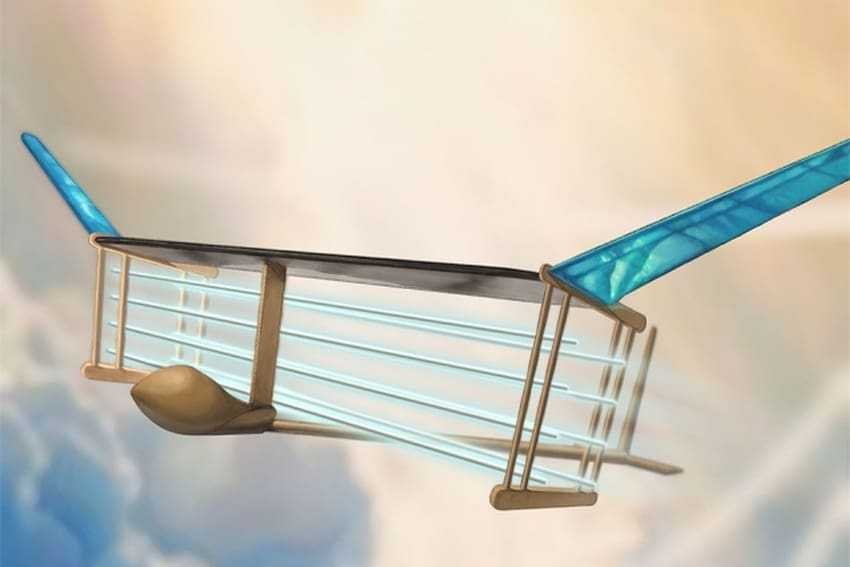The University τις Μασαχουσέτης, το γνωστό σε όλους MIT, κατασκεύασε το πρώτο airplane που πετάει χωρίς κινούμενα μέρη χρησιμοποιώντας τον ιονισμό. Μία εφεύρεση που ίσως την δούμε να εφαρμόζεται για εξαιρετικά ήσυχα drones as well as for hybrid aircraft.

Aircraft, whether they carry an internal combustion engine that produces exhaust gases or carry an electric motor, cannot avoid noise pollution. That is, the noise. And this is because they fly supported by moving parts that propel the air and by extension the plane itself. The researchers of MIT, however, come to overturn a story of almost 100 years, since the Reit brothers flew the first 1903 airplane.
The researchers at MIT have built and successfully thrown an ionic aircraft that does not use mobile parts. The large 5 meter wing aircraft weighs approximately 5 pounds and carries a series of fine wires, which are positioned as a horizontal fence along and below the front end of the airplane blade. The wires act as positively charged electrodes, while similarly arranged thicker wires running along the rear end of the airplane blade serve as negative electrodes.
The airplane shaft contains a lithium-polymer battery pack. Special machines convert battery power to 40.000 volts by charging the cables positively.
Once the cables are positively charged, they attract and release negatively charged electrons from surrounding air molecules, like a giant magnet that attracts iron chips. The air molecules that remain behind are ionized and in turn are attracted by the negatively charged electrodes at the rear of the airplane wings.
As the newly formed ion cloud flows to the negatively charged wires, each ion collides millions of times with other air molecules, creating a thrust that pushes the aircraft forward.
Airplanes operating with ionized winds are not a new invention. Technology has existed for years, but the machines so far have been operating on a bench as they were restricted by the cables that connected these machines to high-voltage power supplies. The solution here was a customized battery power supply that could produce the necessary power for a 60 meter flight, as was the length of the enclosed stadium that was tested. Naturally there was no noise in all the tests since there are no moving parts.
There is a very long way to see this technology in the sky. However, the potential of this invention is evident. Surely at some point you will see very quiet aircraft, such as drones, that will not emit irritating noise. There could also be hybrid planes that could improve fuel efficiency. And since there are no moving parts, the ion-impulse aircraft could be more reliable than the conventional ones.
Watch the relevant MIT video below:





